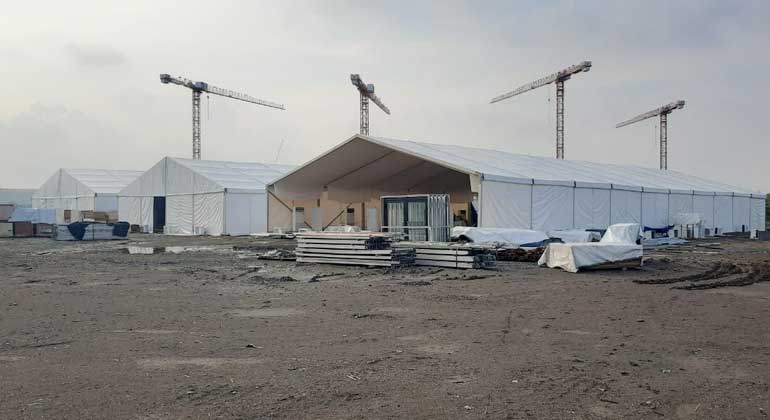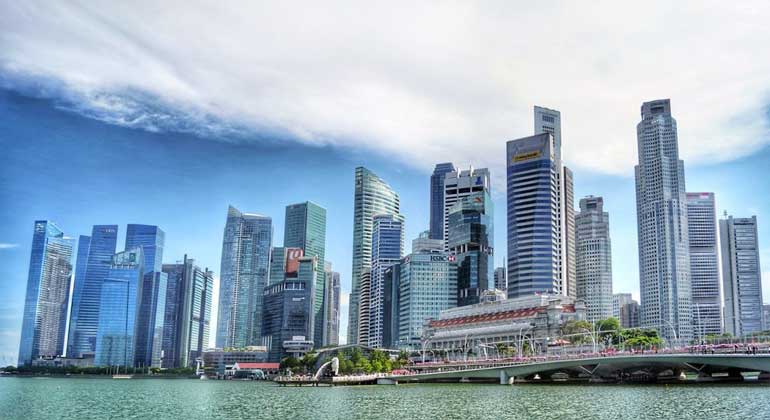By Marissa Mae M. Ramos, Researcher and Beatrice M. Laforga, Reporter
Inflation eased to a three-month low in August amid improved supply as the economy reopened from another two-week strict lockdown meant to contain a coronavirus pandemic, according to the local statistics agency.
Consumer prices rose by 2.4% last month, bringing the eight-month average to 2.5%, the Philippine Statistics Authority said in a statement on Friday.
Philippine central bank Governor Benjamin E. Diokno said the latest headline inflation was consistent with their expectations of a benign inflation environment.
“The balance of risks tilts toward the downside owing largely to potential disruptions to domestic and global economic activity of the ongoing pandemic,” he told reporters in a Viber group message.
“The prevailing interest rate environment and ample liquidity in the financial system are seen to provide sufficient support for economic activity,” he added.
“Price pressures moderated in August as demand-side price pressures faded much faster than anticipated with the economy now in recession,” Nicholas Antonio T. Mapa, a senior economist at ING Bank N.V. Manila, said in a note.
“The capital region was placed under a more stringent quarantine level for the first two weeks of the month, which may have slowed already hobbled demand further,” he added.
The August inflation was slower than 2.7% in July, but faster than 1.7% in August 2019.
It was below the median estimate of 2.8% in a BusinessWorld poll last week. It was at the low end of the Bangko Sentral ng Pilipinas’s (BSP) 2.5-3.3% forecast for the month.
The PSA traced the slower inflation last month mainly to a slower increase in the prices of heavily-weighted food and nonalcoholic beverages at 1.8% from 2.4% in July.
Food inflation eased to 1.7% from 2.5% in the previous month, the slowest since December 2019. However, it was faster than the 0.3% a year earlier.
Other commodity groups with a similar downtrend were beverages and tobacco (17.7% from 19.3%); clothing and footwear (1.9% from 2.2%); furnishing, household equipment and routine maintenance of the house (3.9% from 4%); education (0.1% from 0.5%); and restaurant and miscellaneous goods and services (2.3% from 2.5%).
WITHIN GOAL
Recreation and culture posted a 0.1% annual decline in August, a turnaround from 1.1%. In July.
The eighth-month average inflation was still within the central bank’s 2-4% target and slower than the 2.6% forecast for the full year.
Core inflation, which excludes volatile prices of food and fuel, settled at 3.1% in August. This was slower than 3.3% in July, but faster than 2.9% a year earlier.
The slower price increase might have been due to “steady transport costs”, Security Bank Corp. Chief Economist Robert Dan J. Roces said in a Viber message.
Meanwhile, the August inflation for the bottom 30% of households slowed to 2.7% from 2.9% in July, though it was faster than 1.7% a year earlier. The eight-month average stood at 2.7%.
Inflation is expected to quicken in the coming months as more areas revert to a looser lockdown, which could improve mobility and bring up transport costs, Mr. Roces said.
“The BSP will continue to evaluate the transmission of its recent policy actions,” he said. “But we have penciled in a likelihood of a policy cut and a reserve requirement ratio cut toward the end of this year or early next year as a nudge to recovery efforts in 2021.”
ING Bank’s Mr. Mapa expects rates to remain untouched until next year, even with the real policy rate falling by 0.15%, which could make Philippine assets less attractive to investors.
While negative real interest rates make it more difficult for the central bank to cut rates further, the lack of additional funding for fiscal stimulus measures would make such easing measures possible, said Michael L. Ricafort, chief economist at Rizal Commercial Banking Corp.
“For the coming weeks/months, any further monetary easing measures, especially any further cut in banks’ reserve requirement remain possible as the economy needs all the support measures that it could get at this time,” he added.
The country must improve the agricultural supply chain to ensure stable inflation amid a coronavirus pandemic and impending typhoons, the National Economic and Development Authority said in a separate statement.
NO RATE CUT
Meanwhile, the Philippine central bank is unlikely to cut benchmark interest rates further this year after its governor said policy actions were enough for now, according to Mitsubishi UFJ Group (MUFG) Global Research analyst Sophia Ng.
Mr. Diokno told reporters in a Viber message on Friday monetary measures to cushion the impact of the pandemic “are seen to provide sufficient support to economic activity.”
“This reinforces the notion that another rate cut by the BSP this year is increasingly unlikely,” Ms. Ng said in a note on Friday.
As of July, the central bank has provided about P1.6 trillion in liquidity to the financial system, equivalent to 6.4% of gross domestic product.
Mr. Diokno said the central bank was ready to roll out measures needed as it continues to evaluate the coronavirus crisis.
The Monetary Board has cut key policy rates by 175 basis (bps) points this year, the latest being a 50 bps cut in June. This brought the overnight reverse repurchase, lending, and deposit rates to record lows of 2.25%, 2.75% and 1.75%, respectively.
At its Aug. 20 meeting, the policy-setting body kept the rates unchanged given the manageable inflation outlook and improved economic activities as quarantine rules eased.
“Other economic indicators show that the economy is improving,” Ms. Ng said.
Inflation in August slowed to 2.4% year on year from 2.7% in July, the local statistics agency said on Friday.
The jobless rate also eased from record levels to 10% in July from 17.7% in April. This was still higher than 5.4% a year earlier.
The unemployment rate was equivalent to 4.571 million jobless Filipinos, down from 7.254 million in April but higher than 2.437 million in July 2019.
“With the further reopening of the economy, the government expects the unemployment rate to drop to 6-8%,” Ms. Ng said. “However, the government also expects 700,000 overseas Filipino workers to be affected by year-end. This ultimately means that remittances would continue to decline.”
Acting Socioeconomic Planning Secretary Karl Kendrick T. Chua said they expect the rate to ease to 6-8% next year, backed by relaxed quarantine rules, and further down to 4-5% by 2022. — with Luz Wendy T. Noble



